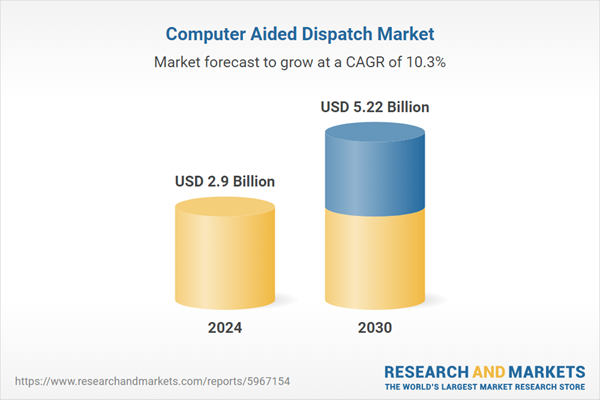Solutions is the fastest growing segment, North America is the largest market globally
Speak directly to the analyst to clarify any post sales queries you may have.
10% Free customizationThis report comes with 10% free customization, enabling you to add data that meets your specific business needs.
Key Market Drivers
The global Computer Aided Dispatch market is significantly influenced by the rising emphasis on public safety and emergency response modernization, alongside supportive government initiatives and investments in public safety infrastructure. These interconnected factors underscore a worldwide commitment to enhancing the capabilities and responsiveness of emergency services, directly driving the adoption and evolution of advanced CAD solutions. As communities and governments prioritize citizen safety and efficient incident management, the demand for integrated and effective dispatch technologies continues to expand.Key Market Challenges
The inherent complexity and substantial cost associated with the implementation and ongoing maintenance of Computer-Aided Dispatch (CAD) systems present a significant obstacle to the expansion of the Global Computer Aided Dispatch Market. The considerable initial capital outlay required for system acquisition and setup, coupled with the specialized training and continuous support necessary for operational effectiveness, creates a formidable financial barrier. This challenge disproportionately affects smaller public safety agencies operating with limited financial resources, often delaying or preventing their investment in advanced CAD technologies.Key Market Trends
Cloud-native deployment acceleration significantly reshapes Computer Aided Dispatch (CAD) systems, shifting to scalable, resilient cloud environments to meet demands for operational continuity and data access during emergencies. CentralSquare Technologies exemplified this trend, announcing on June 10, 2025, its selection of Amazon Web Services as its preferred cloud provider in a five-year agreement to power public sector solutions.Key Market Players Profiled:
- Tyler Technologies Inc.
- RapidDeploy, Inc.
- Nuance Communications, Inc.
- Codan Limited
- Verint Systems Inc.
- Southern Software Inc.
- Motorola Solutions, Inc.
- Hexagon AB
- Mark43, Inc.
- Priority Dispatch Corp
Report Scope:
In this report, the Global Computer Aided Dispatch Market has been segmented into the following categories:By Component:
- Solutions
- Services
By Deployment:
- On-Premise
- Cloud
By End-User:
- Public Safety
- Government & Defense
- Transportation
- Power & Utilities
- Others
By Region:
- North America
- Europe
- Asia Pacific
- South America
- Middle East & Africa
Competitive Landscape
Company Profiles: Detailed analysis of the major companies present in the Global Computer Aided Dispatch Market.Available Customizations:
With the given market data, the publisher offers customizations according to a company's specific needs. The following customization options are available for the report:- Detailed analysis and profiling of additional market players (up to five).
This product will be delivered within 1-3 business days.
Table of Contents
Companies Mentioned
- Tyler Technologies Inc.
- RapidDeploy, Inc.
- Nuance Communications, Inc.
- Codan Limited
- Verint Systems Inc.
- Southern Software Inc.
- Motorola Solutions, Inc.
- Hexagon AB
- Mark43, Inc.
- Priority Dispatch Corp
Table Information
| Report Attribute | Details |
|---|---|
| No. of Pages | 186 |
| Published | November 2025 |
| Forecast Period | 2024 - 2030 |
| Estimated Market Value ( USD | $ 2.9 Billion |
| Forecasted Market Value ( USD | $ 5.22 Billion |
| Compound Annual Growth Rate | 10.3% |
| Regions Covered | Global |
| No. of Companies Mentioned | 10 |









